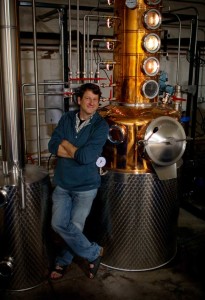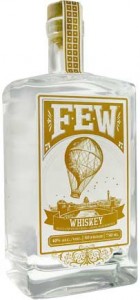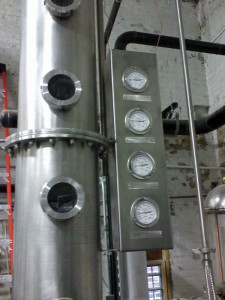By Richard Thomas
American craft whiskey is a big and booming field nowadays, with nearly 500 active distillers and bottlers in operation today. In that crowded field, only a handful of operators enjoy the reputation of Paul Hletko and Few Spirits. As Master Distiller, Hletko has built up a solid reputation around the products of his Evanston, Illinois distillery. In craft whiskey circles, Hletko is a board member of the American Craft Spirits Association and the chairman of its Ethics Committee. That standing is what led Hletko to join other prominent mid-west and mid-south distilleries in the Four Kings collaboration bourbon, and why I wanted to ask him a few questions about his work at Few Spirits.
RT: Your company is named for Frances Elizabeth Willard, head of the late 19th Century Woman’s Christian Temperance Union, who made her home in Evanston. Some call Evanston “the home of Prohibition.” Now I know you had your share of legal troubles in getting Few Spirits cleared to operate in Evanston, but I read that one thing you didn’t have to face is entrenched local nimbyist or dry-movement opposition. So is it safe to say Evanston has changed its ways from Willard’s day, and you enjoy plenty of local support?
PH: There are many people who note the coincidence in our name, and Ms. Willard’s, but its a coincidence – there’s also an elementary in town named after her, and we think it would be poor taste to name a distillery after an elementary school. Few is really intended to evoke the fact that we don’t make a lot of products, and instead, just a few…. That said, the community here has been welcoming from day one, without any opposition. To be sure, I had to jump through a lot of hoops, but most of the hearings were along the lines of “you gotta tell me more, this is so cool” rather than opposition. Despite more than 15 hearings, not one single person ever voted against us, and every vote was 7-0, 9-0, or the like.
RT: I know you are a patent lawyer and you started from a base of a couple of decades of home brewing. What were the challenges you discovered in going from being a brewer to being a distiller, especially when it came to whiskey-making?
PH: I think there are always a lot of challenges doing anything new, but if it were easy, where’s the fun? The biggest challenge between beer and whiskey is seeing the future. With beer, you know rather quickly where your R&D sits – if the beer is good or bad, you know within a couple weeks. Or worst case, a couple months if you are lagering. But that’s just not true with whiskey – you have to be able to predict how the spirit will taste years in the future, and then use that knowledge of how it will taste to tweak your recipe and techniques in the present so you can get the taste you want in the future. Its a big challenge.
RT: One of the things that sets Few bourbon apart is your specific use of Minnesota oak for your barrels, which has a shorter growing season and a tighter grain. Tell us about what that oak does for your whiskey, and about how you discovered it in the first place.
PH: Oak is obviously of utmost importance to whiskey. It is far from the only factor, but it matters. We believe that whiskey is made in the fermenter rather than the barrel, but that does not take away from the importance of wood. Our barrels are a big deal to us, and we work closely with our cooper. We take good care of them, and they take good care of us!
RT: When I was talking to you for the White Whiskey 101 article, you mentioned how that wasn’t a big thing for Few anymore. Are you thinking of phasing out Few White Whiskey down the road?
PH: We love the Few White Whiskey, but it simply does not have the demand that our other products enjoy. White whiskey continues to have an undeserved reputation, but as a small company, we just don’t have the marketing might to sway public opinion. It continues to sell quite well, but it is not our largest product.
RT: In the whiskey vein, does Few have any new specialty or regular products coming down the pike soon?
PH: We are always playing around with new and experimental things. We have a fernet that we’re about to release, and have played around with some amari. We’ll be releasing a super small batch whiskey this fall, with only 20 bottles in the world. It is spectacular, but there’s no more in barrel, so that’s it!
RT: Few is one of the more prominent outfits in America’s booming micro-distillery scene, and you are at least as well-known for your gin as for your whiskey, perhaps more so. My understanding is you have a couple of copper pot stills, one for whiskey and one for gin. Are there any expansion plans in your future?
PH: We’re in the last stages of an expansion to add a Vendome column. We’re still tweaking it a bit, but we are one of the first small distilleries to move into column stills. We’re doing our best to expand our production and availability as best we can!
 The Whiskey Reviewer A World of Whiskey, Poured Every Weekday
The Whiskey Reviewer A World of Whiskey, Poured Every Weekday



